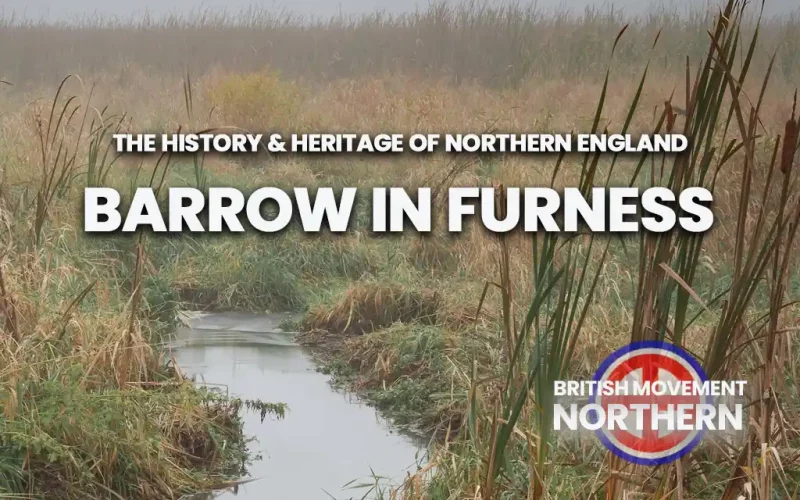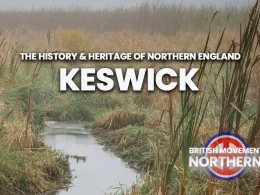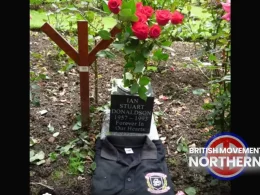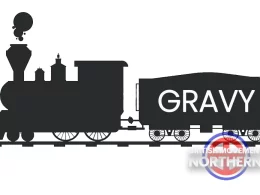Some readers of this series might consider that the town of Barrow in Furness is an odd choice to choose for inclusion, but Barrow is in fact typical of many similar northern towns in that until the end of the 18th Century and the beginning of the Industrial Revolution, Barrow was just a collection of small villages, a coastal anchorage and some off-shore islands.
The situation is complicated by old documents referencing tiny settlements along the Furness peninsula, and including Barrow Island, Piel Island and Roe Island.
Medieval records refer to Barrai (1191), Barray (1292, Insula de Oldebarrey, Barrahaw (1537), then Barrowhead, Old Barrow (sometimes used to describe Barrow Island), and finally Barrow in Furness.
The Furness peninsula and the area around modern Barrow in Furness was sparsely inhabited during the Stone Age (Neolithic), and the Bronze Age, but settlements became permanent in the Iron Age and the consolidation of the Celtic tribes. The Furness peninsula fell under the control of the Brigantes tribe. The Romans did not show much interest in the area and were concentrated on a fort down the coast at Ravenglass.
After the Roman period, the Furness area came under the control of the Kingdom of Rheged, and remained so until the establishment of the northern Anglo-Saxon kingdoms of Deira and Bernicia, later merged into the kingdom of Northumbria, which dominated most of northern England.
The area of the North-West coast which is now classed as Cumbria was sparsely populated across the Anglo-Saxon period, but was settled by the Vikings all down the coast from the Solway to Morecambe Bay. These settlers were Norse Vikings, that that is sea-faring folk from Norway and to a lesser extent, southern Sweden, in contrast to the largely Danish Vikings who were settling northern and eastern England.
The Norse language influence made a large contribution to the dialects of what became North Lancashire, Cumberland and Westmorland.
After the Norman Conquest, the Furness area and its iron deposits became of greater importance,a harbour and anchorage was established, and the area and its islands came under the control of a new abbey, Furness Abbey, established in 1127 by King Stephen. By now the Furness area was considered part of Lancashire. Unfortunately the whole north-west coastal region was regularly subjected to invasion by Scottish war bands, and in 1322, Robert the Bruce staged what came to be known as The Great Raid.
The abbott of Furness Abbey was able to use the abbey’s wealth to pay off the Scottish army, and bribed them to spare the abbey, its farms and coastal port. As a result of frequent Scottish attacks, Piel Island was fortified in 1327 by the construction of Piel Castle. The defences were intended to prevent raiding fleets entering the harbour and anchorages of the Furness peninsula.
The port, harbour and docks grew and the town of Barrow in Furness began to be established, together with exploitation of iron smelting and casting. The late 18th Century saw the Industrial Revolution come to the area, and Barrow in Furness became a centre for ship-building and iron working.
The great industrial investment and expansion of the 19th Century ensured the future direction of Barrow in Furness.
Population points: up until the late 19th Century, Barrow in Furness had an exclusively White British population, with an influx of Irish migrants after the Potato Famine of the late 1840’s.
But in the late 1880’s and 1890’s, as a sea port, Barrow had an influx of Eastern European Jews, who settled in the town, a synagogue was established on Abbey Road in 1902, which moved to larger premises in Crellin Street in 1910, later still relocated to School Street in 1925.
After the Second World War, most of Barrow’s Jewish population moved off to join larger Jewish communities in Manchester and Liverpool, the School Street synagogue closed in 1974 through the lack of a congregation and the last census recorded the Jewish population of Barrow in Furness as less than a dozen persons.
As with many northern towns, Barrow in Furness has seen the arrival of small numbers of Asians, Chinese, and other non-white minorities, but not on the scale of some towns in the North-West.
The British Movement would love to receive articles for possible inclusion on this site from members and supporters across the North of England. Please remember that we have to operate within the laws of this country – we will not include any content that is against the current laws of the United Kingdom. News reports should be topical and be relevant to the regions covered by this website.












